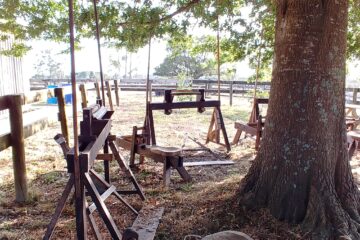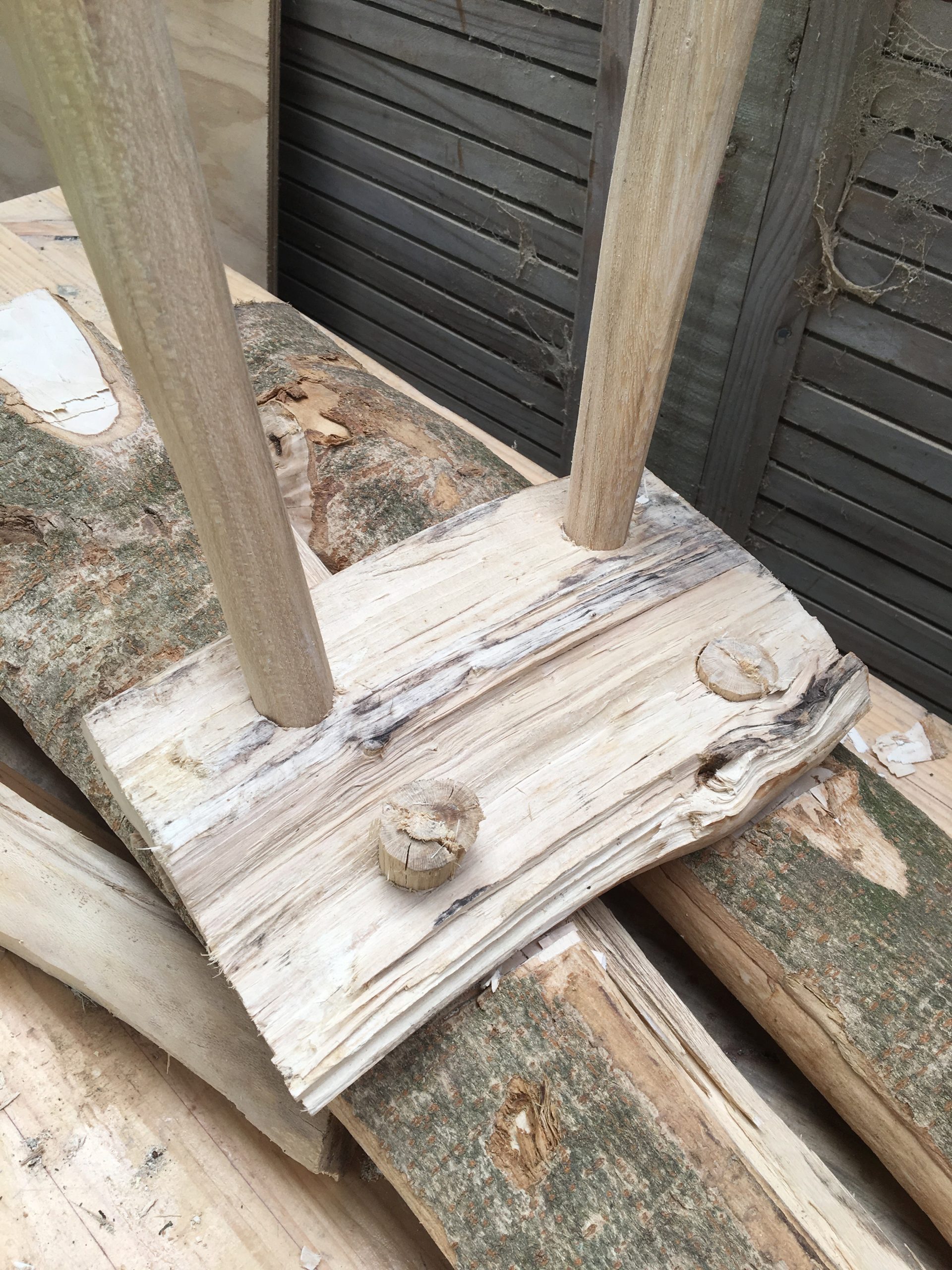Chairs, Memories, and Design
I have wanted to make a chair for some time. And, when I say sometime, I suspect it’s been lurking as a potential project since I was very young. The reason I say this is that when I was young, I used to go to exhibitions and a few other things with my father. My father quite liked crafts and design, he tried jewellery, and pottery, he tried painting, and he certainly regularly made things around the house. In addition, he also had something of an “eye” for design and architecture, whatever that means. He owned some nicely designed stuff. One thing I particularly remember is a watch. It was a very modernist in design. Blue face, minimal markings consisting of single lines across the face at the hour marks. Simple woven strap. I also inherited the suit he got married in once he had outgrown it. My mother used to wryly note that his suit cost more than her wedding dress. It was a very dark navy blue, well tailored, and I wore it for years when I was younger, shorter and slimmer than I am now, which happened to be the same size as my dad when he was newly married. It was a nice piece of clothing. Ditto a woollen overcoat from the same era, the mid sixties. Its worth noting here that the mid sixties in NZ weren’t that hippy, and that as a public servant, Dad was never anywhere near the hippy end of things anyway. The suit had narrow lapels, it was tailored, and it was probably at the “mod” end of things rather than the rocker. Anyway, I have never worn any suit or coat subsequently that was as tailored, or as comfortable, or, frankly, as good looking. So Dad liked nice, well made things.
The interest in design in general and architecture did sort of come with his job: he was the assistant director general for buildings at the Department of Education in New Zealand, back in the day when the Department of Education owned all the buildings, commissioned the designs for all the buildings, built all the buildings and was generally in charge of the nation’s school’s infrastructure. So professionally he had a good reason to have an eye for public architecture. But he also just liked Design.
Where this impacted on me was that occasionally he would go to exhibitions or displays, associated with architecture and design, and I would tag along. So, I have vivid memories of going to an exhibition of final year design students at what was then Wellington Polytechnic’s school of industrial design. At the exhibition my father was animated in a way that was less parent to child, and more peer to peer than otherwise. I was included in his enthusiasm. So my father shared his interest for design with me in these kinds of settings.
So design, and design exhibitions, have an associated memory of times with my father; Good times. Shared times. Calm times.
I suspect lots of our adult passions have this childhood linkage. For a child that grows up sharing calm learning times with a parent, that shared activity is bound to have an emotional association. Cooking clearly fits into this for some people. That association of warmth, nourishment, but also perhaps a shared time with a parent that is more mentoring than parental discipline. Such times are often physically close, as a view-point is shared, or even the operation of a tool is shared. How many of us remember a parent wrapped around us, their hands on ours, guiding us during tool use, be that tool a hammer, a wrench, a blade, a spoon.1 Learning how to beat eggs involved a parental embrace, a parent wrapped around us, the smell of food mingled with the smell of a parent, the reward of a sugary lick of a wooden spoon. The revival of baking during the recent lock-downs due to Covid19 would be for some a nostalgia and a re-connection with parents through a vicarious cookery.
For some families the connections might be other activities; tramping, car mechanics, gardening. How many of these connections might be lost through modern urban settings I am not sure. Surely cuddling up, swiping through holiday photos on a couch has something soothing about it, even if its not an act of making. Maybe. Maybe some of these things are lost, in environments without making, or where things like car maintenance are beyond the technical competence of the enthusiastic amateur.
But in my life, I remember seeing, discussing, and my Dad’s enthusiasm, for design. And I remember seeing chairs with my father. In particular I remember a sculpted chair. We briefly discussed the techniques. The steps of manufacturing a one-off object. I seem to remember it was carved and shaped polystyrene that was then coated with hard material, probably fiberglass, so it was all exotic to me.
And as everyone who has been to an industrial design show knows, chairs are a thing.
Chairs are hard to get right. It’s easy to make an uncomfortable chair. But chairs also lend themselves to a variety of materials, forms, and design solutions. Look through a book of 100 chairs, and you’ll see wood, metal, plastic, leather, aluminium, and materials of all sorts that will be folded, cut, shaped, sawn, carved, glued, screwed, tied, and so on in an infinite variety of combinations. Then there is the human interaction. Chairs interact with all aspects of our body. The ergonomics of chairs is complicated in a way that a table isn’t. Slouch on them, perch on them, work from them, relax in them, stay alert, fall asleep, share them, and sit in splendid isolation: Chairs are at once simple, open to interpretation, tricky to get right functionally, ergonomically and aesthetically demanding as well. They need to communicate: I am a working chair, not a slouching chair. They need to work, look good, and for a designer, have an original input from them.
They also have history. There is a cultural inheritance of chairs, and who doesn’t like challenging history?
They are also doable on a budget, in a small space. I might not be able to actually construct a house, but I can construct a chair in my studio.
Designers and architects kind of like them for these reasons I suspect. Chairs sit in the design milieu as a challenge and a thing to make. Responsive to intellectual nuance and practical impact. Tricky and simple.

Me and chairs.
Another contributing factor for the great chair adventure is that as an individual, my working life of the last 20 years has been mainly sedentary. I have been an academic, and a knowledge worker of various sorts. These jobs involve a lot of time sitting. Chairs have been a fairly fundamental part of my work environment. What’s more because I’m quite a large human being, I notice chairs. Mostly I notice that they are too small. Often quite ridiculously too small. I have slid off chairs, and I find myself frequently fidgeting while sitting, constantly adjusting my posture from one slightly uncomfortable position to another. Part of the solution to this has been the standing desk, but part of the solution has been convincing employers to just buy me a larger chair than normal. There is a trail of large chairs across a number of institutions like a scat trail that indicate “Ben was here.” (It would be interesting to know whether the chair were actively claimed when I left, or whether they just went back into the pool of general office chairs, and people just sit on them and say “this is quite a large chair.”)
Two chairs have been quite “good” and I associate them with good work environments. Firstly the chair I had while writing at my PhD. This chair came with the office in the outbuilding that writing up PhDs were exiled to, and it just seemed to work. It was technically an easy chair I suppose, the kind of chair that you might find and a medical reception area; comfortable, but not too comfortable. I found that I could slouch in it, and write comfortably with my laptop in my lap, and I wrote screeds. It was wide enough for me, including at the back, the armrests were not too high, and so didn’t interfere with my typing, and it was long enough for my body to take a variety of angles of slouch. No hard bits poked into me; it all seemed to work. Unfortunately, I didn’t take any measurements of that chair despite the fact it seemed to work and fit. I did some work at a desk with a more typical office chair, but it was the slouchy chair where most of the writing happened, and it the one I haven’t ever found since.
That all said, I did find a similar chair during my post doc, but it wasn’t as comfortable. Something about the arm rests meant it didn’t quite work. Still, I did get work done in it.
In many way, the quest to make a chair, is to make one that works for me. So its not just about design. I have selfish reasons for this quest. I would quite like a comfortable chair to write in again.

- I hit my Dad’s thumb with a hammer. He was holding the nail I was attempting to drive in. He swore, but he was remarkably patient all things considered. If ever there was a test of the parent as mentor to an apprentice, it was hitting them on the thumb with a hammer (or hammer stone.) I still own the hammer.



1 Comment
The Great Chair Adventure: Part 2 – Ben Jeffares · February 17, 2021 at 11:59 am
[…] Previous […]